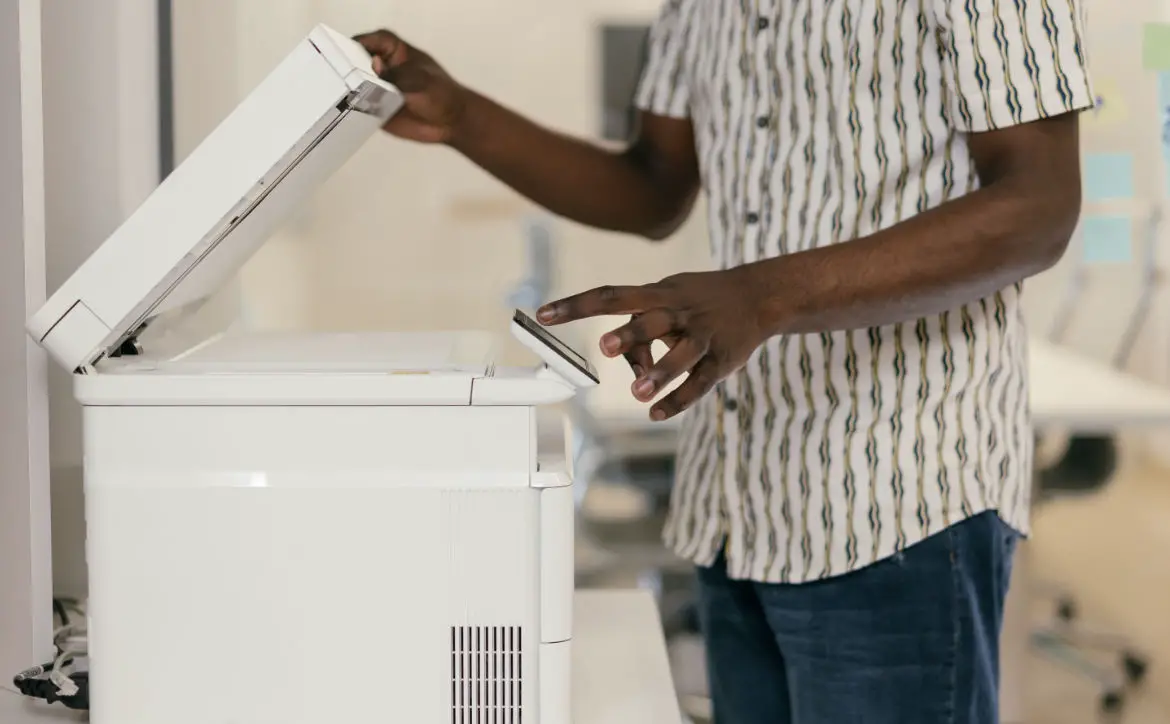Before scanning technology, people had to enter data manually, draw sketches carefully and inspect cars with their naked eyes. Scanning tech makes your life easier — but how does it work?
Estimated reading time: 5 minutes
Learn more about scanning tech with eight interesting insights demonstrating the wide-reaching capabilities of these machines.
Table of contents
What Is Scanning Tech?
Scanning lets you capture information about an object and create computerized images or 3D models. Scanners rely on optical reading devices that capture the document or object they’re scanning. When you scan a document, the scanner uses optical character recognition to distinguish and store each piece of information on a computer.
This technology means you no longer have to enter information manually on a computer — you have a scanner to do the work for you. Modern scanners can edit images by adjusting the brightness, color and contrast, improving the quality. While this technology is convenient, it wasn’t always this great.
Go back in time to 1957. Russell A. Kirsch, an engineer from New York City, used a drum scammer to scan his 3-month-old son. While the picture only contained 176 pixels per inch, it revolutionized scanning technology and ultimately changed the world. Just 20 years later, Xerox developed the flatbed scanner companies still use today.
Scanning technology became widespread by the 1980s, allowing the average person to copy or digitize their documents. In the late 1990s and early 2000s, color scanning and image editing were top innovations of the era, making scanners popular in numerous industries.
What Are the Types of Scanning Technology?

Scanning is wide-reaching, with many different machines using this technology. Here are five types of scanners in stores, offices and logistics facilities.
1. Flatbed Scanner
First, consider the flatbed scanner. This device is among the most recognizable because you’ll see it in any facility where employees or students need to make document copies. Flatbed scanners shine a light on a document and use a sensor to digitize the image. The scanner stores the image in its memory and can recreate the document by making copies.
Flatbed scanners are typically inexpensive due to their simplicity. You only need a few minutes to make as many copies as necessary. You can copy images small and large, as long as they fit on the scanner’s flat surface.
2. Sheetfed Scanner
Another common type of scanner you’ll see is a sheetfed scanner. This machine lets you load many sheets of paper into the scanner, which will then scan each page individually. Copying your documents may take a while, but it’s faster than manually scanning each page.
Sheetfed scanners are convenient if you have many documents you need to scan in one sitting. For example, a teacher may use their sheetfed scanner to scan pages from a textbook. With digital copies, they can easily share information with their students.
3. Drum Scanner
Drum scanners have come a long way since Kirsch’s 1957 device. This machine is best for scanning high-quality photographs because of its resolution capabilities.
Drum scanners use photomultiplier tubes to capture nearly every light signal, allowing you to get high-resolution photographs despite the original image’s low quality. Your typical drum scanner can eclipse 10,000 dots per inch (DPI) to create fantastic quality. Kirsch’s drum scanner image of his son might not compare to today’s pictures, but it was a remarkable achievement for the time.
4. 3D Scanner
One of the most important innovations in scanning technology has been 3D scanning. This technology lets you collect information about a three-dimensional entity, such as a human. With this data, you can recreate the object with 3D models. The machines use laser triangulation to scan and measure the object’s dimensions and accurately represent it with 3D models.
Today, 3D scanners are commonplace in numerous industries, such as engineering, medicine and entertainment.
5. Barcode Scanner
Another common scanner you see daily is the barcode scanner. This device reads barcodes on store items, receipts and other objects to identify the item quickly. Barcode scanners work by shining a light onto the object, allowing the decoder to scan the pattern. It only takes a second or two for the scanner to recognize what it’s looking at.
You’ll most often see barcode scanners at grocery stores when scanning your food. You’ll also see them in transportation, logistics, and even state lottery systems. For example, imagine you buy a jackpot ticket. You can scan your ticket and know in under a second if you’ve won. This technology increases convenience and security for state lottery systems and encourages more people to play.
What Sectors Rely on Scanning Technology?

Scanning is something you use daily, whether at the store or work. If you don’t use it, you likely have a family member or co-worker who does. These three industries use scanning technology for their daily operations.
1. Logistics
Shipping has become significant with the growth of e-commerce. Experts say the world shipped 159 billion parcels in 2021, emphasizing the need for efficiency. Logistics companies use scanning technology for warehouse management duties, such as inventory tracking.
2. Health Care
Scanning technology has helped health care facilities digitize medical records, but it goes much further. Medical professionals use scanning for radiology, including CT scans, MRIs and X-rays. You also see scanning in pathology, surgery, and telemedicine.
3. Auto Manufacturing
The rise of electric vehicles (EVs) demonstrates scanning technology’s abilities. In manufacturing, automakers use 3D scanners to produce EV models. With this technology, researchers can analyze cars to find issues. EVs are generally reliable with minimal maintenance because scanners provide excellent quality control, ensuring accurate assembly with each machine.
Benefiting From Modern Scanners
Scanning tech is something you shouldn’t take for granted. While scanners are relatively new compared to the telephone or radio, they’re becoming just as indispensable. Nowadays, you see scanners in numerous sectors, with some machines capable of saving lives.
What do you think of scanning tech? Please share your thoughts on any of the social media pages listed below. You can also comment on our MeWe page by joining the MeWe social network. And subscribe to our RUMBLE channel for more trailers and tech videos.
In some of our articles and especially in our reviews, you will find Amazon or other affiliate links. As Amazon Associates, we earn from qualifying purchases. Any other purchases you make through these links often result in a small amount being earned for the site and/or our writers. Techaeris often covers brand press releases. Doing this does not constitute an endorsement of any product or service by Techaeris. We provide the press release information for our audience to be informed and make their own decision on a purchase or not. Only our reviews are an endorsement or lack thereof. For more information, you can read our full disclaimer.
Last Updated on March 13, 2024.










